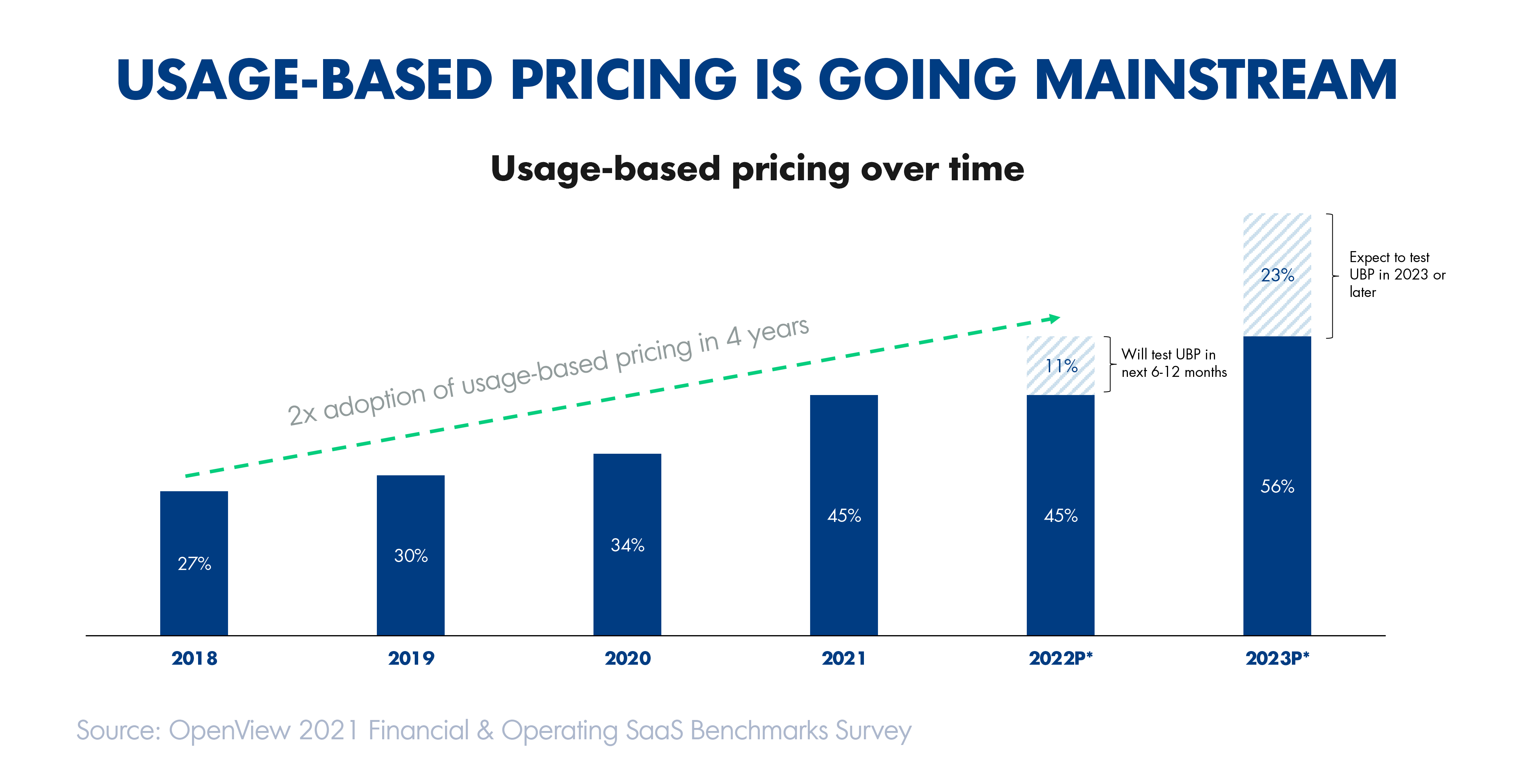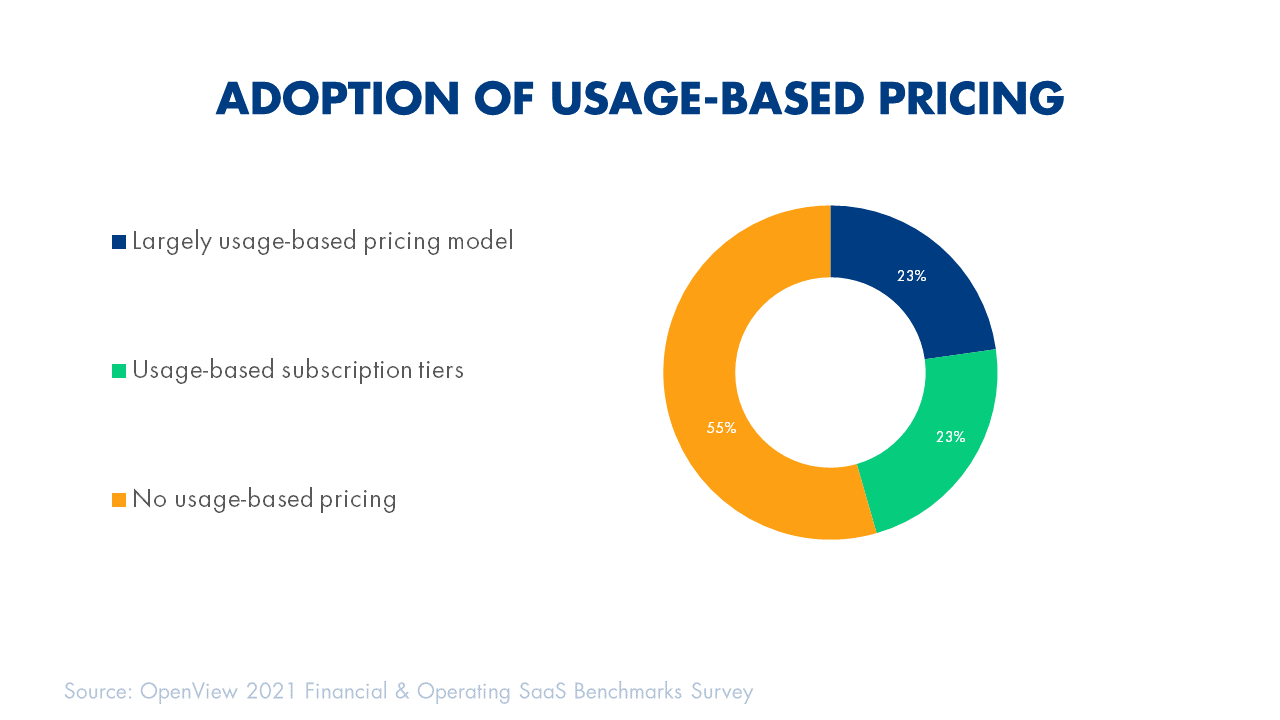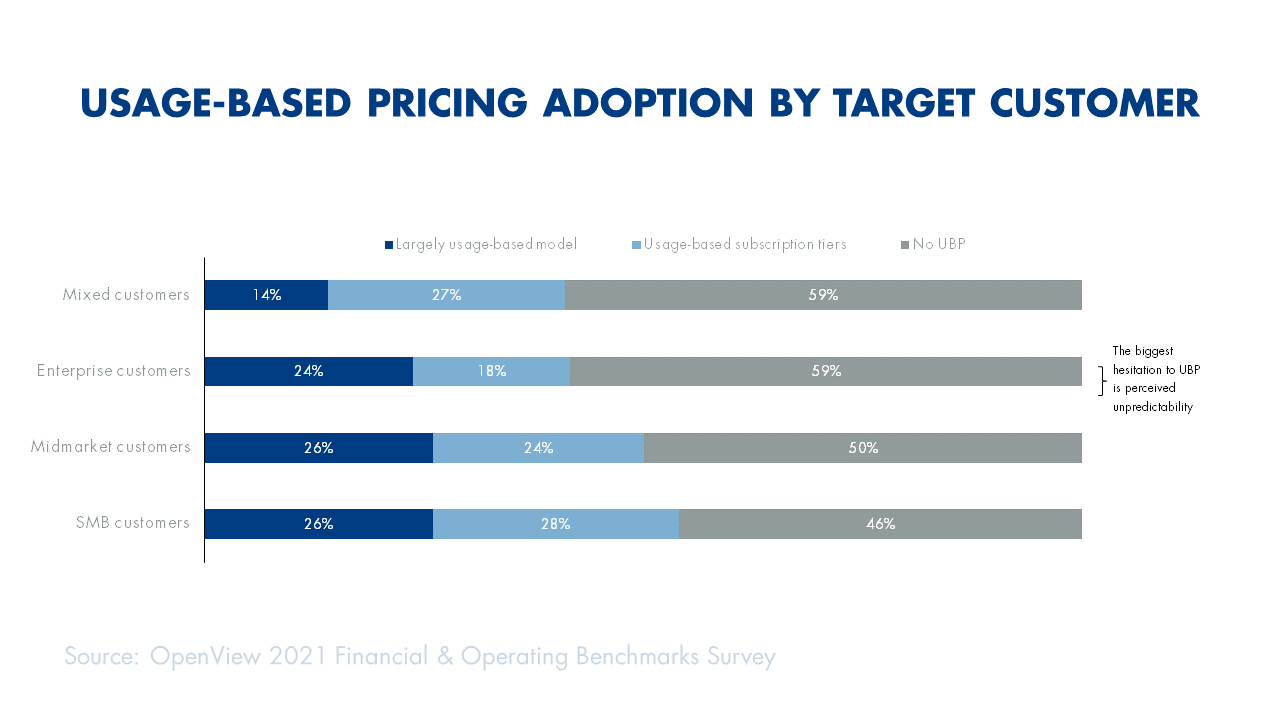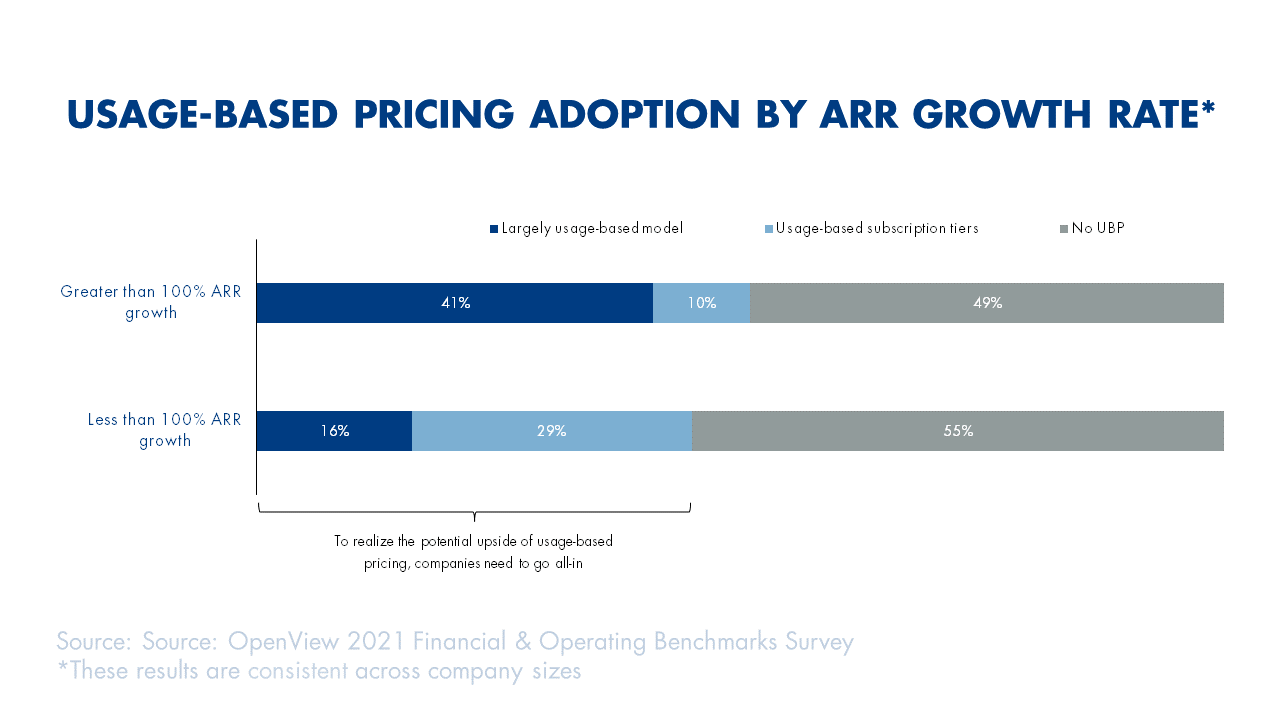Kyle Poyar
It’s not just your imagination — usage-based pricing (UBP) is seemingly everywhere in 2021.
SaaS companies have been ditching traditional subscription pricing in favor of usage-based models that better align with modern buying behavior and the value delivered by their products. UBP, also known as consumption-based pricing, connects how much a customer pays with how much they consume a given product or service.
Public cloud observability company New Relic introduced its consumption-based pricing model in July 2020. More recently the company doubled down on the model, deciding to only pay sales reps based on customers’ actual consumption rather than subscription commitments. The decision appears to be paying off, as New Relic has seen a spurt in both account growth and data retention, two leading indicators the company tracks closely.
Similar pricing pivots have been made by startups like Cypress, which introduced consumption-based pricing in March 2021; pre-IPO companies like Kong, which announced a pay-as-you-go pricing tier in May 2021; and even longstanding companies like 40-year-old Autodesk, which introduced pay-as-you-go pricing in September.
According to our State of Usage-Based Pricing Report, which includes data from nearly 600 participants, 45% of SaaS companies had a UBP model in 2021. This figure is up significantly compared to 34% in 2020 and 30% in 2019.

The wave won’t slow down in 2022
A quarter of companies that currently use a UBP model say they introduced it within the last 12 months. This year’s adoption of UBP exceeds that of both 2019 and 2020 combined.
Meanwhile a majority of the UBP holdouts (61%) say they expect to either launch or test usage-based pricing in the near future. If these trends continue, UBP will become the norm, not the exception, as early as 2022.
Subscriptions versus UBP isn’t an either-or decision
The data shows that UBP can — and often does — co-exist with traditional subscription pricing. Those with a usage-based model are divided equally between those who offer usage-based subscription tiers (23%) and those with a largely usage-based or pay-as-you-go pricing model (23%).

Usage-based subscriptions can be a way for SaaS companies to test the feasibility of UBP without needing to completely change their business model. Zapier, for example, offers a subscription package that includes a set amount of usage (tasks) as well as value-added functionality. Those who exceed their usage limit see their tasks held until they either upgrade or their monthly usage resets, creating a powerful incentive for heavy users to increase their spend over time.
UBP companies are pervading the SaaS landscape
While infrastructure software companies like AWS and Azure popularized consumption-based pricing, these models are no longer limited to this small segment of the market.
Companies of all sizes are adopting UBP at roughly similar rates, according to the survey. The highest adoption is among earlier stage SaaS startups with $1 million-$5 million in ARR (50%), indicating that more companies may be coming to market with UBP. Still, the differences across revenue bands is extremely modest, with 44% of those with $5 million-$20 million in ARR and 47% of those with over $20 million in ARR adopting UBP.
The survey revealed a somewhat large disparity depending on the target customer base. Those selling to SMB or midmarket customers were more likely to adopt UBP compared to those focused on enterprises or a mixed customer base.

Even still, it’s clear that selling to enterprises doesn’t necessarily need to be a barrier to testing a usage-based pricing model. Enterprise procurement teams have historically been hesitant to buy software with an unpredictable cost, but that’s increasingly changing as they realize the benefits in terms of increased flexibility and reduced shelfware.
Tellingly, even the Government Services Administration (GSA) has been eyeing a new policy to allow federal agencies to purchase software on a consumption-basis.
UBP companies outperform their peers, but there’s a catch
The fastest-growing SaaS companies, those growing at over 100% per year, are disproportionately likely to leverage a UBP model. But in order to realize the benefits, companies must go all-in on UBP.

This faster revenue growth is driven primarily by usage-based companies’ ability to grow their existing customers at extremely high rates, as measured by net dollar retention (NDR). Top-quartile NDR for those with a largely UBP model was 122%, compared to those with usage-based subscription tiers (110%) or no UBP (109%). This new data confirms trends in the public markets, where SaaS companies with the highest NDR, such as Snowflake (158%), have almost exclusively leveraged a usage-based model.
Going all-in on UBP clearly has significant upside potential for startups and established players alike. But companies should be clear-eyed about what’s required to get there. UBP is a business model transformation, not just a pricing model, and calls for a new approach to go-to-market strategy, sales compensation, financial KPIs and product development.






























Comment